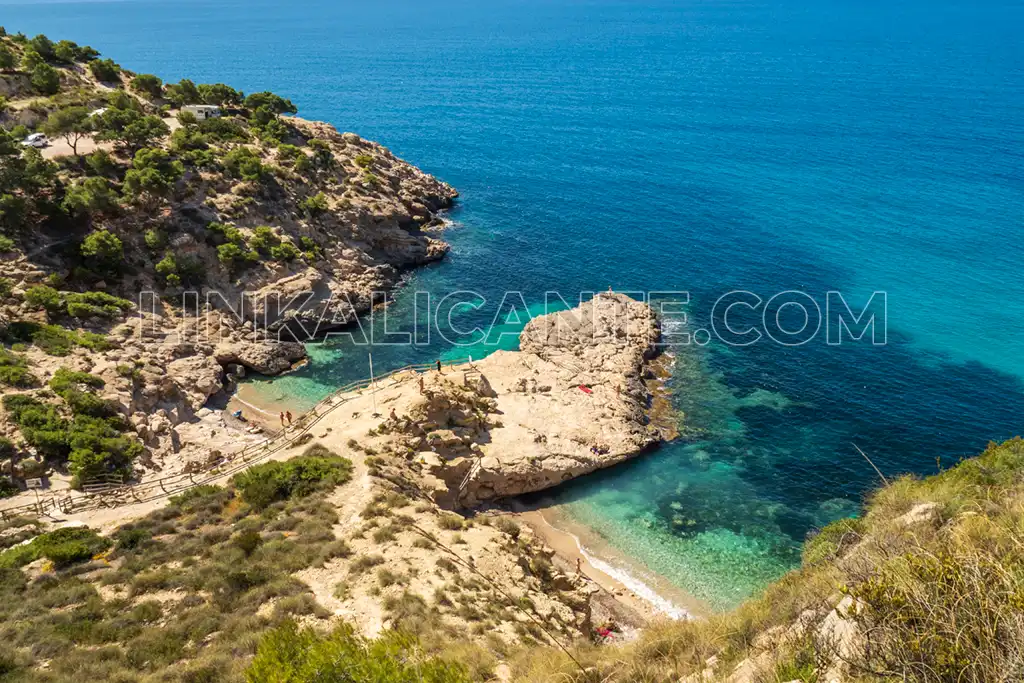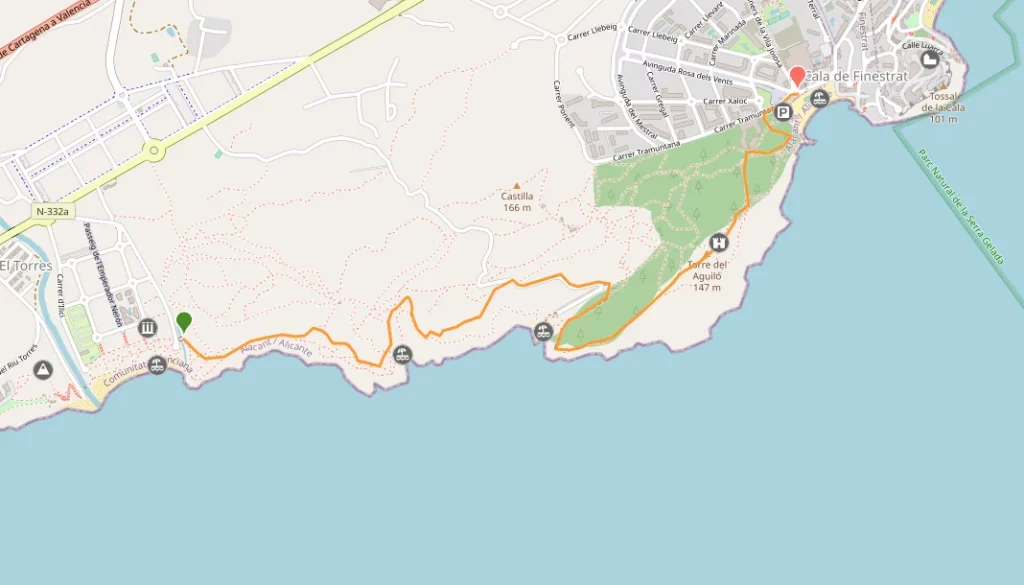The Path of the Coast of Villajoyosa (also called Colada de la Costa de la Vila Joiosa) is a simple and beautiful excursion that will take us to know one of the few virgin stretches of the coast of the province of Alicante.
Starting from the quiet Playa del Torres, we will walk along the edge of small cliffs and coastal mountain ranges, until we reach one of the most beautiful coves in the province of Alicante: the naturist beach of Racó del Conill.
Along the way, a remarkable cultural heritage awaits us, from the history of this path to the two towers that we find along the way: the Torre de Sant Josep and the Torre del Aguiló.
All these attractions, and many others, await us in the Path of the Coast of La Vila Joiosa, a route flooded by the magical light of the Mediterranean … Will you join me to know the rest? Let’s start!
Índice del Artículo
ToggleRoute Summary
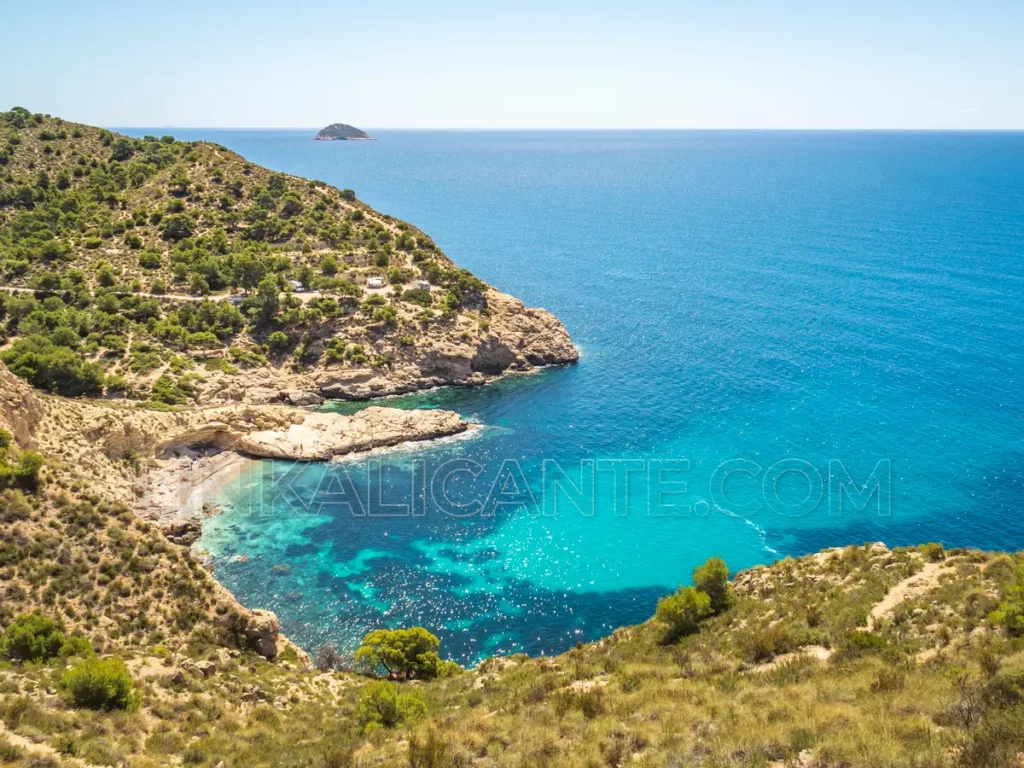
The Coastal Path, or Colada de la Costa de La Vila Joiosa, runs along one of the few undeveloped areas of the coast of Alicante. Specifically, the stretch between the beach of El Torres de Villajoyosa (La Vila Joiosa), and the Cala de Finestrat (also known as Cala Morales).
This is an easy walk (with ups and downs), about 4 kilometers long, which will take us to the beautiful nudist cove of Racó del Conill, an ideal place for snorkeling.
At the highest point of the route we find the Aguiló Tower, from where we can enjoy a beautiful view of the coast of Alicante.
DATA SHEET
- Difficulty: Easy
- Linear route (round trip)
- Distance: 10 km (roundtrip)
- Elevation gain: +350 m (one way)
- Approximate time: 3-4 hours + stops
Description and Photographs
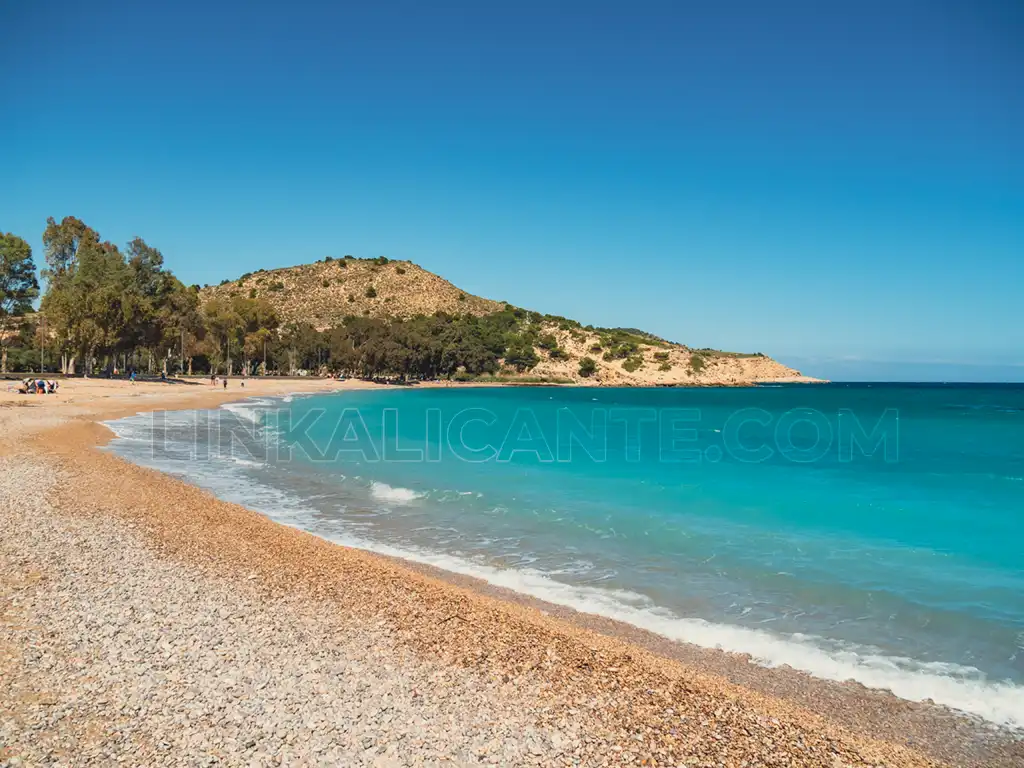
This is a simple route that we can enjoy all year round, not only in spring or summer (it is a perfect trail to enjoy a sunny autumn / winter morning).
The route of the coast of La Vila Joiosa is suitable for children (I would recommend at least 6 years old), as it is a simple route. As I said at the beginning, this is an undeveloped strip of coastline, and for that reason alone, it is worth visiting.
The “Colada de la Costa” trail was reconditioned a few years ago, with the installation of markers and signage. In any case, it is difficult to get lost: just follow the coastline.
The trail runs at a certain height above sea level, which allows us to enjoy excellent views. Along the route we find several secondary trails that allow us to descend to the sea, in search of small coves from which to snorkel.
The tour begins at Playa del Torres, more specifically on the left side facing the sea, a few meters away from the shore, through a walkway and steps delimited by a wooden railing.
After the first few meters of ascent, the trail continues along a flat stretch with beautiful views that brings us to the vicinity of Cala Fonda.
The dirt path continues with a gentle but steady climb to the esplanade and viewpoint over the Cala Racó del Conill. At this point we start the descent to the cove, on asphalt. Here we can take a detour to visit the cove and take a swim, before continuing to the Torre del Aguiló.
La Cala del Racó del Conill Cove
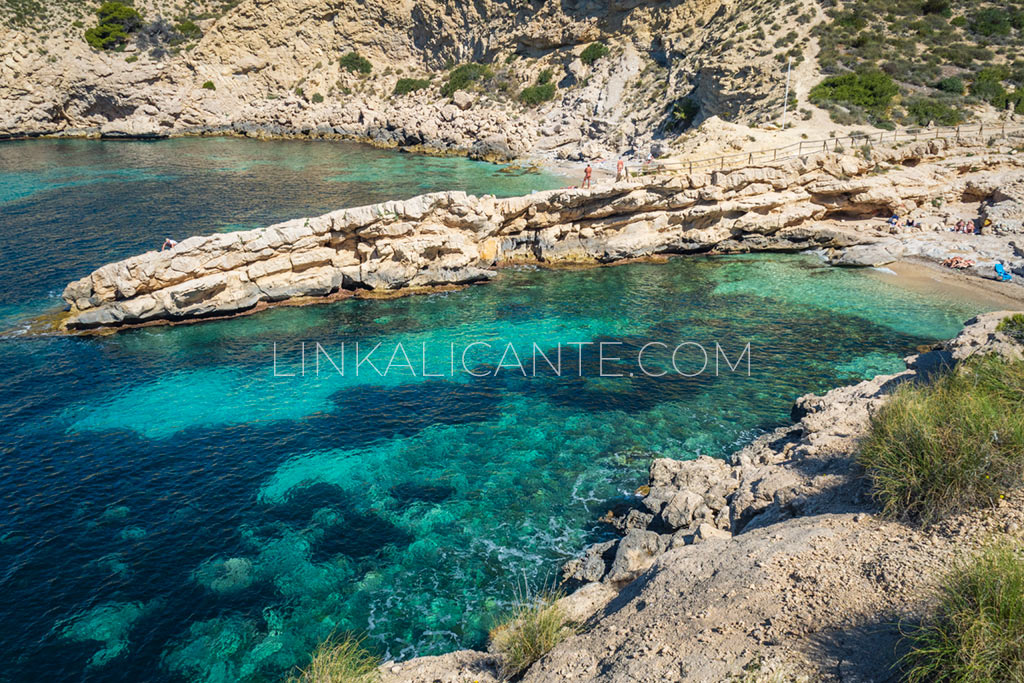
The Racó del Conill
is a naturist beach of small dimensions, which in summer time is usually quite frequented due to the fact that it has access by road.
It is actually 2 small beaches, divided by a rocky outcrop. The north one, on the left, is the smallest of them. The southern one, on the right, is somewhat larger and hidden. It is usually the preferred area for people who practice naturism. In any case, with respectful behavior, there is usually a good coexistence between “textiles” and naturists.
The Aguiló Tower
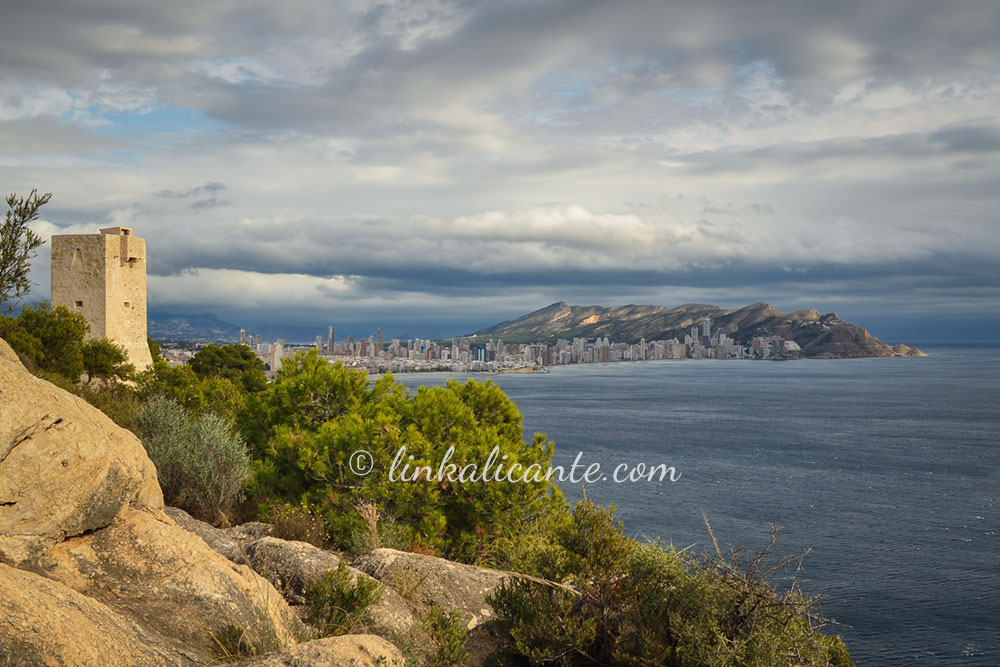
After visiting the beautiful nudist cove of El Racó del Conill, we start the ascent to the Torre del Aguiló.
Aguiló Tower
a coastal defensive tower built in the 16th century.
Like other towers on the Mediterranean coast, its mission was to warn of possible attacks by Barbary pirates. These towers communicated with each other by means of light signals, spreading the alarm.
The Aguiló Tower is located about 150 meters above sea level, and next to it we find a couple of wooden tables. It is a fantastic place to enjoy a picnic with excellent views.
The tower, square in plan and about eight meters high, was restored in 2009. It is currently closed, and I have not been able to find any information about visits to it.
Towards the Finestrat Cove
From the Torre del Aguiló, we start the descent along a path with wooden “steps” towards the Cala de Finestrat or Cala Morales. Unfortunately, this is the end of the undeveloped section of the route.
Once in the Cala de Finestrat, we can choose to have a coffee or a beer in one of the cafes on the beach. Of course, choose one with a view to the south…
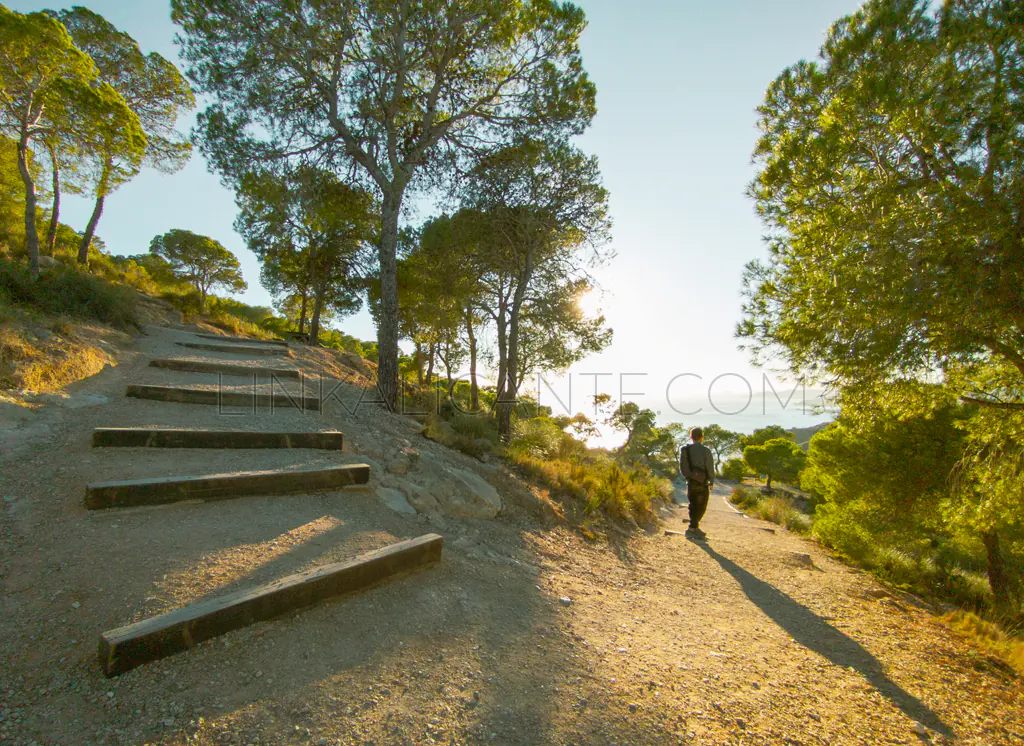
The “short version” of the route ends at this point. But I propose an alternative: keep walking and walk along the Poniente Beach in Benidorm, and then go up to the Benidorm TRAM station. From there, we take the streetcar and return to La Vila, getting off at Creueta station.
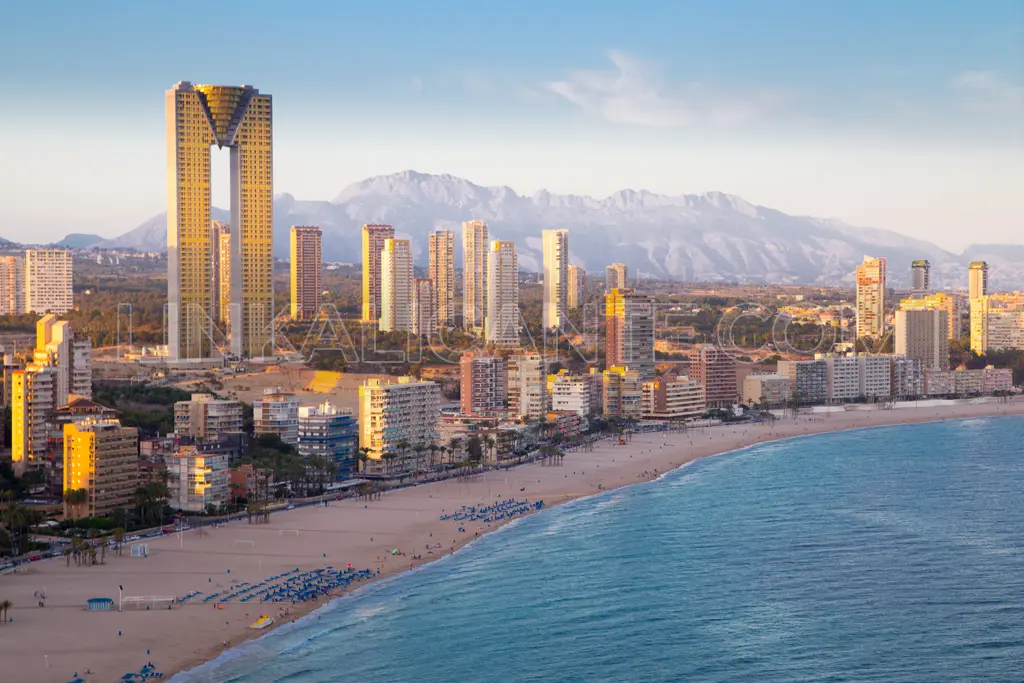
If you are still strong enough, another interesting option to extend the route is to climb up to the Tossal de la Cala, an archaeological site and fantastic viewpoint overlooking the beaches of Benidorm.
If you opt for this alternative extended route, I recommend starting the route in the port of La Vila (I leave the track below).
Track for GPS
Here is the GPS track of this route in 2 versions of different lengths:
➡️ Short version, from Playa del Torres to Cala de Finestrat: 10.5 km. round trip.
➡️ Extended version, from Platja Centre de La Vila, to Benidorm Tram station, 13 km. Return by Tram.
The “extended version” starts at the “Platja Centre” of La Vila Joiosa, and goes through other beaches such as “Los Estudiantes”, to finish at the Tram station in Benidorm, from where we return by public transport.
Map and track of the short version:
History and Cultural Heritage
Beyond the beautiful views, this is a route steeped in history and cultural heritage. The origin of this trail or wash (a minor gully) can be traced back to the cattle ranchers who moved from the interior of the province in search of a warmer climate and new pastures.
In terms of cultural heritage, the Torre de Sant Jopsep (or Tower of Hercules), located in Playa del Torres, is a funerary monument from the Roman period (2nd century AD) declared BIC (Cultural Heritage of Cultural Interest). On the other hand, the Aguiló Tower dates back to the 16th century and was part of the watchtower system to defend the coast from pirate attacks. It has also been declared BIC (Bien de Interés Cultural).
We can also find in the surroundings the old carabineros barracks, located in a strategic position from which it could control the landings of smugglers, frequent during the nineteenth century and early twentieth century.
Do not miss...
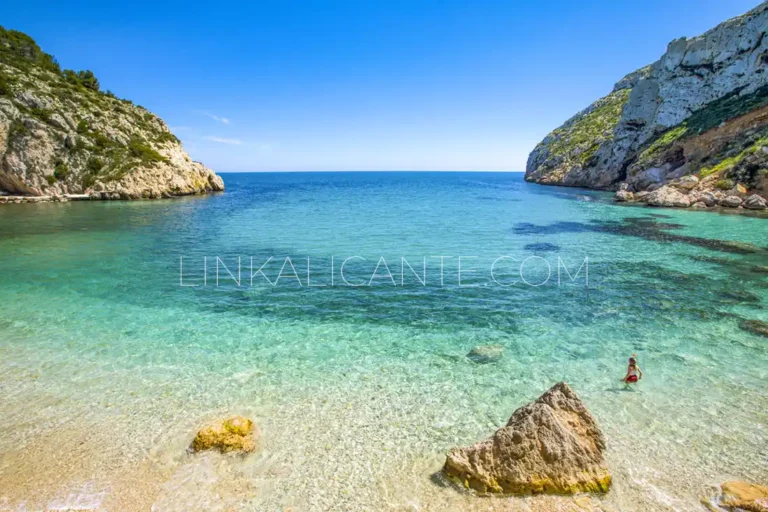
The 10 Best Coves in Alicante + Map
Discover the 10 Best Coves of Alicante and its location map in this tour from north to south along the coast of the Costa Blanca.
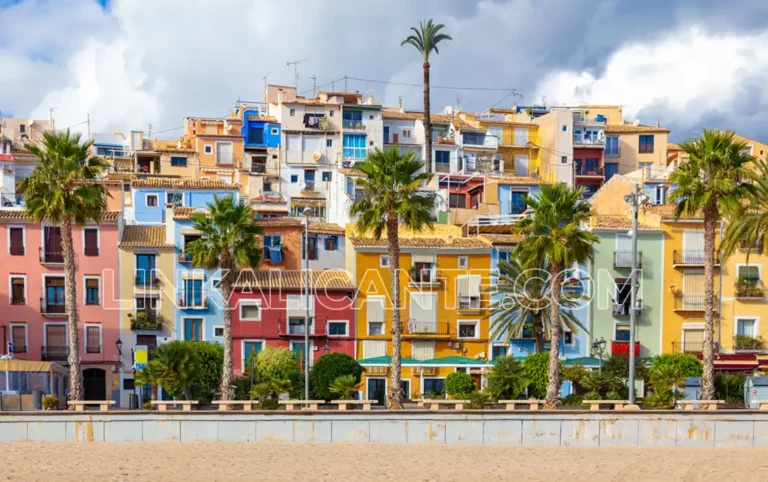
Discover Villajoyosa: a journey of flavor, history and natural beauty.
Come and discover Villajoyosa, jewel of the Costa Blanca, and let yourself be seduced by its coves, its history, its gastronomy and its vibrant local festivals.
Article originally published in LinkAlicante.com in February 2015, and updated in July 2023.

